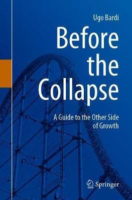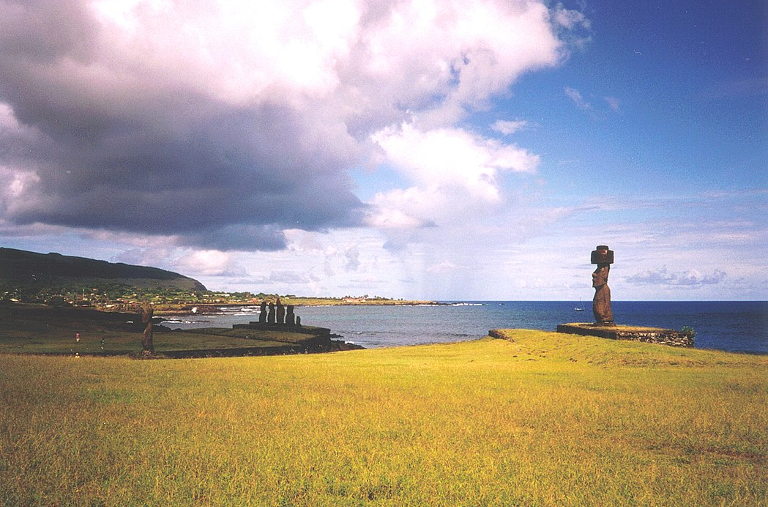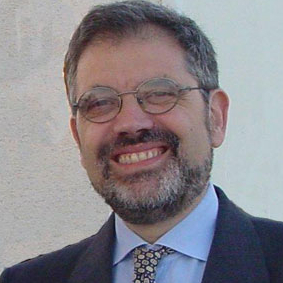 My 2019 book “Before the Collapse.” In it, I examined several scenarios of the future of humankind. Was I able to predict the current pandemic? Of course not in the details, but I think that I did note an important facet of the story: epidemics are never very deadly when they come alone. They become true killers only when they are associated with famines. In the case of the current coronavirus pandemic, the human population is not so badly debilitated by famines that we should have expected disasters comparable to those caused by ancient epidemics. So, we could have been better prepared if we had paid more attention to history. But the main thing we learn from history is that people never learn from history. And so it goes. This post includes a review of the book written by Daniel Ruiz.
My 2019 book “Before the Collapse.” In it, I examined several scenarios of the future of humankind. Was I able to predict the current pandemic? Of course not in the details, but I think that I did note an important facet of the story: epidemics are never very deadly when they come alone. They become true killers only when they are associated with famines. In the case of the current coronavirus pandemic, the human population is not so badly debilitated by famines that we should have expected disasters comparable to those caused by ancient epidemics. So, we could have been better prepared if we had paid more attention to history. But the main thing we learn from history is that people never learn from history. And so it goes. This post includes a review of the book written by Daniel Ruiz.
After nearly one year from the start of the COVID-19 pandemic in China, we can say that, at the very least, we learned a lot from it. One lesson was that we should be much more careful about “model hubris”, to think that because a model is complex and detailed, it can predict the future. This problem is well described in a recent paper by Saltelli et al. in a recent paper in “Nature.”
But perhaps the most important lesson we learned was how easy the future can surprise us and how our perception of it can be remote from reality. We tend to judge on the basis of our past experience, but our mental models are often poorly calibrated. When the COVID-19 started diffusing in the West, many people panicked, some seemed to think that it really was the end of the world. Maybe they had in mind as a model the great plague of the Middle Ages, an image that has been with us for centuries.
As things stand, we can see that the coronavirus pandemic will be very far from being as deadly as ancient epidemics were. It is said that the “black plague” killed maybe 50% of the population of Europe during the 14th century, perhaps even more than that. For the current “plague” caused by the coronavirus, we may estimate that, if the current trends continue, the world may see perhaps 2 million deaths (we are now at about one million). For a world population of nearly 8 billion people, it is such a small number (about 0.025%) that it is even difficult to visualize it. Just to frame the number in context, consider that every year, there die in the world some 60 million people (and 140 million are born!). For a virus that has caused so much concern, it is surely an anticlimactic result.
But why such a big difference? Why the little SARS-COV 2 fared so poorly (from the viewpoint of the pathogen) in comparison with the Yersinia pestis, the bacterium that causes the bubonic plague during the Middle Ages? And why doesn’t the deadly Yersinia return? It has not disappeared, it is reported to have caused more than 500 victims during the past few years. But it does not spread.
It is said that it was Paul Samuelson who said “When events change, I change my models. What do you do? (I changed one word). This is what we should do, too.
On this point, I can tell you that I examined the question of epidemics in my 2019 book “Before the Collapse” when I described how the world’s population could be partly wiped out by various kinds of disasters. I correctly noted that epidemics are always associated with famines, typically following them. Disastrous pandemics never come alone.
Rethinking this matter more in-depth, it seems more and more clear to me that an epidemic can hardly affect populations of people who are well-nourished and in good physical conditions. That’s especially after I started looking into the concept of “holobiont” and noting that we are true walking bags of bacteria and viruses, most of them harmless, many beneficial, but some potentially harmful — even deadly — but normally they remain dormant.
But all that is needed to set these little critters in motion is that your body is weakened by something. A whole population can be debilitated by hunger and then it becomes an easy target for normally harmless creatures. That was the case of the Medieval plague that followed a period of extensive famines in Europe. Today, evidently, the 8 billion human beings living on this planet are still well-fed enough that they can fend off the attacks by most viruses and bacteria. For how long, it is all to be seen.
And here is a review by Daniel Ruiz of “Before the Collapse.” It deals not just with famines and epidemics, but with a lot more things!
Book review: Before the Collapse. A Guide to the Other Side of Growth, Ugo Bardi (2019)
http://magazine.cisp.unipi.it/
The overshoot of human activity is driving the planet from the stability of the Holocene to the instability of the Anthropocene. This includes physical changes like global warming, extinction of species, pollution, pandemics, rising oceans, wildfires, as well as other more directly human-driven catastrophes like the risk of nuclear war, mass migration, economic crises, resource depletion, or inequality. This perspective has encouraged the Academia to develop the new science of Collapsology, among whom Ugo Bardi is a pioneer.
Bardi presents Before the Collapse as a mainstream version of his previous book, The Seneca Effect (2017). He refers to the Roman Stoic philosopher Lucius Annaeus Seneca, who first theorized on collapse as a natural phenomenon rather than supranatural. Bardi clarifies that this fast and unexpected degradation is a feature of any complex system: health, careers, marriages, enterprises, banks, armies, economies, civilizations, resources, ecosystems, solid objects, etc., and regrets that our culture has not yet developed a “science of collapse” due to our blind belief in infinite growth. The purpose of the book is to analyse the phenomenon of collapse as well as to prepare for the aftermath. He proposes a “Seneca Strategy” to confront collapse: Attention, Avoidance (be prepared), Mitigation, Exploitation (get rid of the obsolete structures).
In the first Chapter Bardi insists on the necessity of models to help understand complex reality. These models should not be based on a heuristic/statistic method of projecting the past into the future, but on the scientific method which consists of splitting a system into subsystems, analyze them separately, and then build a model of how the whole system works. The climate change models, starting with the Limits to Growth (1972), is a good example of the success of this method. The statistical approach cannot predict tipping points or “black swans” like the economic crisis of 2008 or an eventual runaway greenhouse effect. The scientific approach is particularly important to study systems that cannot be reproduced in a laboratory, like climate. The models are then used to build future scenarios. Bardi points out that some politicians tend to ignore models for emotional reasons, or to hide their own mistakes, or because they are badly advised, or for “groupthink” or for “doom fatigue”.
Chapter 2 describes Sciences behind Complex Systems and Collapses. The science of complex systems only developed in the second half of the 20th century, as soon as adequate tools like computers were available. In the past, physical science could only describe systems with single equations. A system is considered complex if it contains energy and shows strong feedback effects, which can be enhancing or damping. Bardi defines the most important jargon of the complex systems field, like forcing, feedback, attractor, tipping point, carrying capacity, overshoot. Complex systems have the basic characteristics of living beings because they dissipate energy potentials through the trophic chain. EROEI (Energy Return on Energy Invested) gives a measure of the efficiency of the system. The MEP (Maximum Entropy Production) principle says that energy potentials dissipate fast. Only Networks can be complex systems. Bardi also explains some of the jargon of the network science like node, link, size, density, degree, clustering coefficient, topology, etc. Networks can have many arrangements, like: connected, lattice, random, fully-connected or cellular. Bardi introduces Amelia the Amoeba, which reproduces slowly in the Petri dish and then collapses of starvation and suffocation in its own excreta, as a metaphor for the way complex systems behave. Some of the possible growth modes of complex systems are: exponential, logistical, bell shaped or collapsing:
Chapter 3 is about the practice of collapse. It starts with the collapse of the Genoa cable-stayed Morandi bridge in 2018 as an example of the collapse of Engineered Structures. Bardi then describes how Financial Collapses happen: the very nature of money, through the stresses of the “market”, leads to debt and eventually to insolvency and bankruptcy. Bardi illustrates the process of Natural Disasters with the example of the Florence flood of 1966, and points out that large disasters are not frequent but cause massive damage. Regarding Mineral Collapses, Bardi elaborates on oil, which is scarce, has increasing extraction costs and is being outcompeted by renewable energies. Bardi also concludes, based on historical records, that Human Violence it is an inherent feature of the present human culture. Concerning Famines, Starvation and Depopulation, Bardi thinks that humans have been able to dramatically increase their population in recent centuries thanks to fossil fuels, but that this should change with the end of cheap energy and the depletion of fertile soil. Civilizations have arisen from the availability of abundant and cheap natural resources and they should collapse due to the “diminishing returns of complexity” and the rising costs of resources and pollution. According to Dmitri Orlov, the Soviet Union followed the pattern of financial, commercial, political, social and cultural collapses. However the ultimate collapse is that of the Ecosystem, with the best science available warning that we are on track for a temperature rise of 3-4ºC over the next decades, and that tipping points could push the planet into the condition of “hothouse earth”.
Chapter 4 deals with the Strategies for Managing the Collapse. Bardi starts by clarifying that production cannot be driven by technological progress only, but by the input of energy and resources. He advocates for fossil fuels to be used to develop renewable energies.
The Iago (from Shakespeare´s Othello) Strategy analyses how some evil individuals have imposed their interests to the rest of humanity through a mix of deception and force. Climate change denial by the elites is a good example of it. The present economic system, founded on greed, is also critiqued: it reduces the functioning of the world to the mechanics of the market, advocating for the overexploitation of finite resources while relying on hypothetical “backstop resources”, and endeavours to isolate the individuals in order to prevent collective action to protect the planet.
The next section deals with how to control the collapse of complex systems, and introduces the last Roman Empress Galla Placidia who, instead of trying to avoid the inevitable end of the Empire, helped to transition European society to the medieval system. The Edo period of Japan is another example of how a society can be prosperous without growth.
The last section develops the concept of the Seneca Rebound as the recovery after collapse. European society, after the four recorded historical collapses managed to rebound because the reduction of the population facilitated the restoration of energy sources in the shape of fertile soil and forests. Hopefully the next rebound, after the end of the fossil fuel era, will be energized by renewable sources.
Through a balanced mix of physical science and cultural references, Bardi announces in a clear and amenable manner the collapse that looms our civilization. With stoicism and ironic humour, he advises us not to resist the inevitable at all cost, but rather to get prepared for the next rebound. A second edition of this extremely interesting book, with additional editing and translation to other languages, would be highly welcome.
Teaser photo credit: Subtropical broadleaf forests disappeared from Easter Island, the island is currently mostly covered in grassland with nga’atu or bulrush (Schoenoplectus californicus tatora) in the crater lakes of Rano Raraku and Rano Kau. By Makemake, CC BY-SA 3.0, https://commons.wikimedia.org/w/index.php?curid=301667






